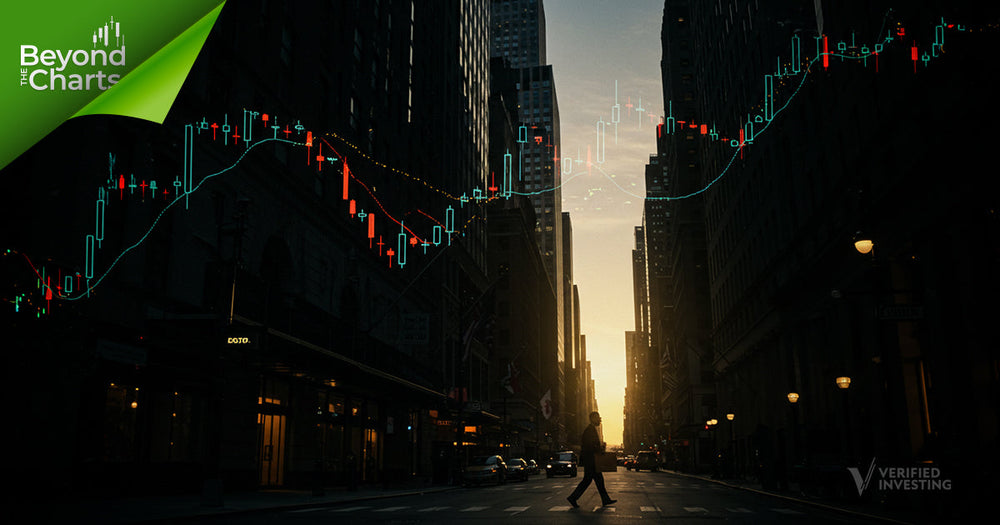Shadow Banking: The Unseen Forces Shaping Global Finance

Introduction: The Financial System's Hidden Side
In the heart of Manhattan's financial district on September 15, 2008, a moment that would reshape the global financial landscape unfolded. Lehman Brothers, a 158-year-old investment bank with over $600 billion in assets, collapsed in spectacular fashion. Employees carried belongings in cardboard boxes as they exited the firm's headquarters for the last time. Markets plummeted. Credit froze. What followed was the most severe economic contraction since the Great Depression.
Yet Lehman's fall wasn't simply about one bank's failure—it represented the unraveling of a vast, interconnected system that had flourished largely outside traditional regulatory boundaries. This system—shadow banking—had grown to rival conventional banking in size and influence, yet operated with significantly less oversight. Today, we explore this parallel financial universe that continues to shape global markets, evolve through regulatory landscapes, and influence investment decisions in ways that few fully understand.
1. What Is Shadow Banking?
Traditional banks follow a relatively straightforward model: they take deposits, benefit from government insurance protecting those deposits, submit to regulatory oversight, and in exchange, gain access to central bank support during crises. Shadow banks operate differently.
Shadow banking encompasses financial institutions and activities that perform bank-like functions—providing credit and liquidity—but exist outside the conventional banking system's regulatory framework. These entities don't accept traditional deposits yet engage in maturity transformation (using short-term funding to finance longer-term assets) and credit intermediation (channeling funds from savers to borrowers).
The term "shadow bank" was coined by economist Paul McCulley in 2007, during a speech at the Federal Reserve's annual symposium in Jackson Hole, Wyoming. Yet the activities had been developing for decades before receiving this now-ubiquitous label. What began as financial innovation to circumvent regulations and capital requirements evolved into a complex ecosystem of specialized financial entities.
This ecosystem includes money market funds, asset-backed commercial paper conduits, certain hedge funds, securities lenders, finance companies, and various special purpose vehicles. Even traditional banks participate in shadow banking through off-balance-sheet activities and subsidiaries. Investment banks, prior to the 2008 crisis, embodied many shadow banking characteristics—Lehman Brothers being the most notorious example.
2. The Evolution of Shadow Banking
Shadow banking didn't emerge overnight—it evolved gradually alongside changes in regulation and financial innovation. The 1970s and 1980s saw the rise of money market funds as alternatives to bank deposits, offering higher returns while seeming to maintain deposit-like safety. The 1980s and 1990s witnessed the growth of securitization, whereby loans were packaged into tradable securities, moving credit risk off bank balance sheets.
By the early 2000s, investment banks had dramatically expanded their balance sheets, funding themselves largely through short-term borrowing in repo markets while investing in increasingly complex mortgage-related securities. This period also saw the proliferation of off-balance-sheet vehicles that banks used to avoid capital requirements while maintaining economic exposure to various assets.
The system grew enormously. By 2007, according to Financial Stability Board estimates, shadow banking assets had reached an astounding $62 trillion globally. In the United States, shadow banking assets exceeded those of traditional banks. This parallel system had become too large to ignore yet remained poorly understood by most market participants and regulators.
3. Key Mechanisms of Shadow Banking
Understanding shadow banking requires examining its key mechanisms and instruments. Unlike traditional banking, which typically follows a deposit-to-loan pathway, shadow banking operates through interconnected chains of transactions, each serving specific purposes in the broader financial ecosystem.
Repurchase Agreements (Repos)
At the heart of shadow banking lies the repo market—a critical funding mechanism. In a repo transaction, an entity sells securities with an agreement to repurchase them at a slightly higher price in the near future (often overnight). Functionally, this resembles a secured loan, with the securities serving as collateral. Prior to the 2008 crisis, investment banks like Lehman Brothers were funding hundreds of billions in assets through the repo market, rolling over these short-term loans continuously.
Securitization and Structured Products
Securitization transforms illiquid assets like mortgages or auto loans into tradable securities. Loans are pooled together, repackaged, and sold to investors as asset-backed securities (ABS) or mortgage-backed securities (MBS). More complex variants include collateralized debt obligations (CDOs) and their derivatives. These instruments enable credit risk transfer and, theoretically, risk diversification—though as 2008 demonstrated, they can also obscure and concentrate risks.
Money Market Funds
These funds collect investments from various entities seeking safe, liquid placements for cash, then purchase short-term debt instruments like commercial paper and repos. They played a crucial role in the 2008 crisis when the Reserve Primary Fund "broke the buck" (fell below the sacrosanct $1 net asset value) after Lehman's collapse, triggering widespread panic and market freezes.
Special Purpose Vehicles (SPVs)
SPVs are legal entities created specifically to fulfill narrow functions, often to hold assets or liabilities separate from a parent company's balance sheet. Banks frequently used SPVs pre-crisis to move assets off their books while maintaining economic exposure, effectively circumventing capital requirements while bearing similar risks.
4. The 2008 Financial Crisis and Shadow Banking

The 2008 crisis revealed the profound vulnerabilities in the shadow banking system. As U.S. housing prices peaked and began declining in 2006-2007, cracks appeared in mortgage securities markets. By 2007, subprime lenders were failing, and structured investment vehicles sponsored by major banks were experiencing funding difficulties.
Bear Stearns' hedge funds collapsed in summer 2007, and by March 2008, Bear Stearns itself required emergency intervention to prevent failure. The crisis accelerated through 2008, culminating in Lehman Brothers' bankruptcy filing on September 15. This event triggered widespread panic in shadow banking markets:
- The commercial paper market effectively shut down
- Money market funds experienced massive redemptions
- The repo market seized as collateral values became uncertain
- Asset-backed securities couldn't find buyers at any reasonable price
Without deposit insurance or direct central bank access, shadow banks proved exceptionally vulnerable to runs. When investors lost confidence, they withdrew funding en masse, forcing rapid asset sales at distressed prices, which further depreciated similar assets held by other institutions—creating a destructive spiral.
The crisis highlighted several fundamental weaknesses in the shadow banking system:
- Maturity mismatch: Funding long-term assets with extremely short-term liabilities
- Excessive leverage: Operating with minimal capital buffers
- Regulatory arbitrage: Exploiting gaps in supervision
- Complexity and opacity: Creating instruments and structures too complex to properly evaluate
- Interconnectedness: Building chains of transactions where one failure could cascade throughout the system
5. Regulatory Reforms After the Crisis
The 2008 crisis prompted substantial regulatory reform efforts aimed at addressing shadow banking vulnerabilities. In the United States, the Dodd-Frank Act of 2010 established the Financial Stability Oversight Council (FSOC) with authority to designate nonbank financial institutions as systemically important, subjecting them to enhanced supervision.
Internationally, the G20 tasked the Financial Stability Board (FSB) with developing recommendations for strengthening oversight of shadow banking. These efforts yielded several important reforms:
Money Market Fund Regulation
The Securities and Exchange Commission implemented significant reforms, requiring institutional prime money market funds to adopt floating net asset values rather than the stable $1 NAV that had contributed to run risks. Funds were also empowered to impose redemption gates and liquidity fees during stress periods.
Enhanced Capital and Liquidity Standards
Basel III significantly strengthened bank capital and liquidity requirements, reducing incentives for regulatory arbitrage through off-balance-sheet vehicles. Banks now face stricter requirements when providing explicit or implicit support to shadow banking entities.
Securitization Reforms
New rules require issuers to retain some risk in securitizations ("skin in the game"), while enhancing disclosure requirements to improve transparency. Rating agency reforms addressed conflicts of interest that had contributed to inaccurate risk assessments.
Central Clearing for Derivatives
Standardized over-the-counter derivatives now generally require central clearing, reducing counterparty risk and improving transparency in these markets.
Despite these reforms, regulatory approaches to shadow banking continue to evolve as the system itself adapts and innovations emerge. Rather than eliminating shadow banking, post-crisis measures have generally aimed to make it more resilient while preserving its beneficial functions.
6. Shadow Banking in the Modern Financial System
The shadow banking system didn't disappear after 2008—it transformed. According to the Financial Stability Board, shadow banking assets (now termed "non-bank financial intermediation") reached an estimated $239 trillion globally by 2022, representing nearly half of all financial system assets.
Several trends characterize today's shadow banking landscape:
Shift in Composition
Traditional securitization markets have declined relative to their pre-crisis size, while asset management activities have grown substantially. The mix of entities and activities has changed, with greater emphasis on market-based finance and less reliance on highly structured products.
Private Credit Expansion
As banks retreated from certain lending activities due to regulatory constraints, private credit funds have expanded to fill the void. These funds, often managed by asset managers or private equity firms, provide direct lending to companies, particularly middle-market firms.
Financial Technology Innovation
Fintech companies have introduced new lending models and platforms, creating additional channels for credit intermediation outside traditional banking. These innovations bring benefits but also potential new risks and regulatory challenges.
Geographic Diversification
While the pre-crisis shadow banking system was heavily concentrated in the United States and Europe, today's system shows greater global diversity. China, in particular, has experienced rapid shadow banking growth, raising concerns about financial stability in the world's second-largest economy.
Institutional Adaptation
Large institutional investors like pension funds and sovereign wealth funds increasingly engage directly in credit markets, sometimes taking on roles previously dominated by banks or specialized shadow banking entities.
7. Weighing the Pros and Cons of Shadow Banking
Shadow banking isn't inherently problematic—it serves important functions in modern financial systems. However, its evolution continues to present both opportunities and challenges.
The Benefits
Credit Availability: Shadow banking expands access to credit beyond what traditional banks alone might provide, potentially fueling economic growth and financial inclusion.
Financial Innovation: The sector often pioneers new financial products and services that can improve market efficiency and offer investors more options for managing risk and return.
Diversification: By creating alternative channels for financial intermediation, shadow banking potentially reduces concentration in the banking system and diversifies systemic risk.
Specialized Expertise: Many shadow banking entities develop deep expertise in specific market segments, potentially improving asset valuation and risk assessment in those areas.
The Risks
Regulatory Gaps: Despite post-crisis reforms, shadow banking activities may still exploit regulatory gaps, potentially concentrating risks outside regulators' full view.
Procyclicality: The system can amplify market cycles, expanding rapidly during booms and contracting sharply during downturns, potentially exacerbating financial instability.
Complexity and Opacity: Some shadow banking activities remain difficult to monitor and understand, making risk assessment challenging for investors, counterparties, and regulators.
Interconnectedness: Shadow banks maintain extensive connections with traditional banks and other financial institutions, creating potential contagion channels during stress periods.
Liquidity Transformation: The fundamental vulnerability of funding long-term, illiquid assets with short-term liabilities remains present in parts of the system, though often with improved safeguards.
8. The Road Ahead: Trends Shaping Shadow Banking’s Future

Looking forward, several factors will likely shape shadow banking's evolution:
Regulatory Developments
The regulatory perimeter continues to evolve, with authorities seeking a balance between mitigating risks and preserving beneficial financial innovation. Future regulatory cycles may expand or contract depending on political and economic conditions.
Technological Transformation
Artificial intelligence, blockchain, and other technologies are changing how credit is assessed, delivered, and traded. These developments may create entirely new forms of shadow banking that challenge traditional regulatory frameworks.
Market Structure Changes
The entry of big technology firms into financial services blurs traditional industry boundaries and creates new forms of credit intermediation that don't fit neatly into either banking or shadow banking categories.
Macroeconomic Conditions
The prolonged low interest rate environment following the 2008 crisis drove yield-seeking behavior that benefited many shadow banking activities. The recent shift to higher rates may reshape these dynamics, potentially creating new vulnerabilities.
Climate Transition Financing
The massive capital needs for climate transition may spur new forms of shadow banking focused on green financing, potentially creating both opportunities and risks in this emerging area.
Conclusion: Navigating the Shadows
Shadow banking represents neither villain nor hero in the financial system—it's a complex, evolving ecosystem that reflects broader economic and regulatory forces. Its development highlights a fundamental tension in financial regulation: the desire to ensure stability while enabling innovation and efficiency.
For investors, understanding shadow banking's mechanisms and evolution offers valuable perspective on market dynamics and potential risks. The system's continued growth suggests it will remain a significant force shaping global finance, influencing everything from mortgage availability to retirement savings.
The lessons of 2008 remind us that financial innovation often outpaces regulatory frameworks, creating periodic vulnerabilities that only become apparent during stress. Yet the shadow banking system has also demonstrated remarkable adaptability, evolving to meet changing market needs while incorporating many post-crisis safeguards.
Perhaps the most important insight is recognizing that the boundary between traditional and shadow banking isn't fixed—it shifts continuously as regulation, technology, and market practices evolve. In this constantly changing landscape, maintaining financial stability requires vigilance from regulators, market participants, and yes, even individual investors.
The shadows in finance, it seems, are neither fully illuminated nor completely dark—they exist in a perpetual twilight of partial visibility, reminding us that understanding financial markets requires looking beyond conventional boundaries and recognizing the unseen forces that shape them.
Trading involves substantial risk. All content is for educational purposes only and should not be considered financial advice or recommendations to buy or sell any asset. Read full terms of service.




